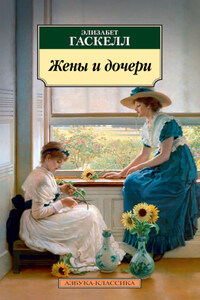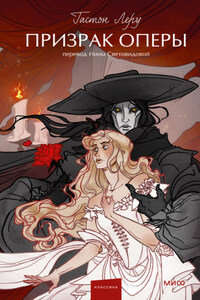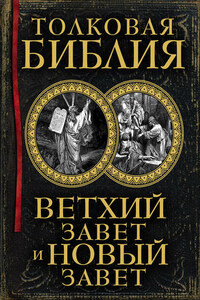The sun was westering over Ike Brandon’s ranch at Twin Forks. It was the first year of a new century when the old order was giving place to the new. Yet there was little to show the change that had already begun to take place in the old West. The desert still stretched away drearily to the south where it ended against the faint, dim line of the Esmeralda Mountains. To the north it stretched again, unpopulated and unmarked until it merged into prairie grass and again into mountains. To west and east it stretched, brown and dusty. To the south was the State of Nevada and to the north the State of Idaho. But it was all alike; bare, brown rolling plain, with naught of greenness except at the ranch where the creek watered the fields and, stretching back to the north, the thread of bushy willows and cottonwoods that lined it from its source in the mountains.
Ike Brandon was, himself, a sign of change and of new conditions, though he did not know it. A sheepman, grazing large herds of woolly pests in a country which, until recently, had been the habitat of cattlemen exclusively, he was a symbol of conquest. He remembered the petty warfare that had marked the coming of his kind, a warfare that he had survived and which had ended in a sort of sullen tolerance of his presence. A few years ago he had gone armed with rifle and pistol, and his herders had been weaponed against attack. Now he strode his acres unafraid and unthreatened, and his employees carried rifle or six-shooter only for protection against prowling coyotes or “loafer” wolves. Although the cow hands of his erstwhile enemies still belted themselves with death, they no longer made war. The sheep had come to stay.
The worst that he and his had to expect was a certain coldness toward himself on the part of the cattle aristocracy, and a measure of contempt and dislike toward his “Basco” herders on the part of the rough-riding and gentle-speaking cow hands.
These things troubled him little. He had no near neighbors. To the north, across the Idaho border, there was none nearer than Sulphur Falls, where the Serpentine, rushing tumultuously from the mountains, twisted in its cañon bed and squirmed away to westward and northward after making a gigantic loop that took it almost to the Line. To the south, a ranch at Willow Spring, where a stubborn cattleman hung on in spite of growing barrenness due to the hated sheep, was forty miles away. To east and west was no one within calling distance.
At Sulphur Falls were two or three “nesters,” irrigating land from the river, a store or two and a road house run by an unsavory holdover of the old days named “Snake” Murphy. For a hundred and twenty-five miles to southward was unbroken land. The cattle were mostly gone – though in days to come they were to return again in some measure. Even the Esmeralda Mountains were no longer roamed by populous herds. They were bare and forbidding, except where the timber was heavy, for the sheep of Brandon and others, rushing in behind the melting snow in the spring, had cropped the tender young grass before it had a chance to grow strong.
Brandon’s ranch was an idyllic spot, however. His dead wife and, after her, her daughter, also dead, had given it the touch of feminine hands. Vines and creepers half hid the dingy house behind a festoon of green and blossoms. Around it the lush fields of clover were brilliant and cool in the expanse of brown sultriness. And here, Ike, now growing old, lived in content with his idolized granddaughter, Marian, who was about six years old.
Brandon, at peace with the world, awaited the return from the summer range of “French Pete,” his herder, who was to bring in one of the largest flocks for an experiment in winter feeding at and in the vicinity of the ranch. The other flocks and herders would, as usual, feed down from the mountains out into the desert, where they would winter.
Little Marian hung on the swinging gate which opened onto the apology for a wagon road. She liked quaint French Pete and looked forward to his return with eagerness. Like her grandfather, he always spoiled her, slavishly submitting to her every whim because she reminded him of his own p’tit bébé, in his far-away, Pyrenean home. Marian was used to being spoiled. She was as beautiful as a flower and, already, a veritable tyrant over men.
But now she saw no sign of French Pete and, being too young for concentration, she let her glance rove to other points of the compass. So she was first to become aware that a rider came from the north, the direction of Sulphur Falls, and she called her grandfather to come and see.
The horseman loped easily into sight through the brown dust that rose about him. His horse was slim and clean limbed and ran steadily, but Brandon noted that it was showing signs of a long journey made too fast. It was a good horse, but it would not go much farther at the pace it was keeping.
And then he frowned as he recognized the rider. It was a young man, or rather, boy, about nineteen or twenty years old, rather dandified after the cow-puncher fashion, sporting goatskin chaps and silver-mounted bridle and spurs, silk neckerchief, and flat-brimmed hat of the style now made common by the Boy Scouts. His shirt was flannel, and his heavy roping saddle studded with silver conchas. He was belted with heavy cartridges, and a holster strapped down to his leg showed the butt of a six-shooter polished by constant handling.








